Sandakphu Phalut Trek
Fitness Regime for your Himalayan Treks (Comprehensive plan to make you fit for any trek in 4 weeks)
Sandakphu being the highest peak of Singalala national park offers to breathe taking views of the four tallest mountains in the world. Mt. Kanchenjunga (8598m), Mt. Makalu (8481m), Mt. Lhotse (8571m) and Mt. Everest (8848m) with very good clarity as if the mountains are just some km away.
Kanchenjunga is the third highest peak in the world situated in the middle of the Kanchenjunga range also called “The Sleeping Buddha“. The Name is given for its appearance. The Mt. Kumbakarna peak makes its nose, forming a human face, Kanchenjunga peak makes its belly and Mt. Pandim makes its feet. The other part of the Sandkphu Trek, Kanchenjunga range is described in the Itinerary section.
Sandakphu in Singalila Forest is a home of many wildlife species. Red Panda are most famous among all as it’s a state animal of Sikkim and also it’s very rare to spot red pandas because of their shy nature. Sure they are rare but it is worth traveling long distance for just a glance of this beautiful animal.
The route of this Sandakphu trek is on the India and Nepal border. In fact, on the trek, you will constantly enter and exit Nepal. As the trek is a long-distance trek, it is always advised to follow your guide instruction and forest regulations.The trail includes several monasteries, grasslands, snow-covered tracks, jungle trail surrounded by huge mountains and amazing helping people.
Boundaries are often fluid but also forbidding, whether it’s the ones we draw or those that nations create and bicker over. But crossing them, both literally and metaphorically, can lead to unexpected, wonderful adventures. This is something that you would discover in Sandakphu a journey bound to put you out of your comfort zone.
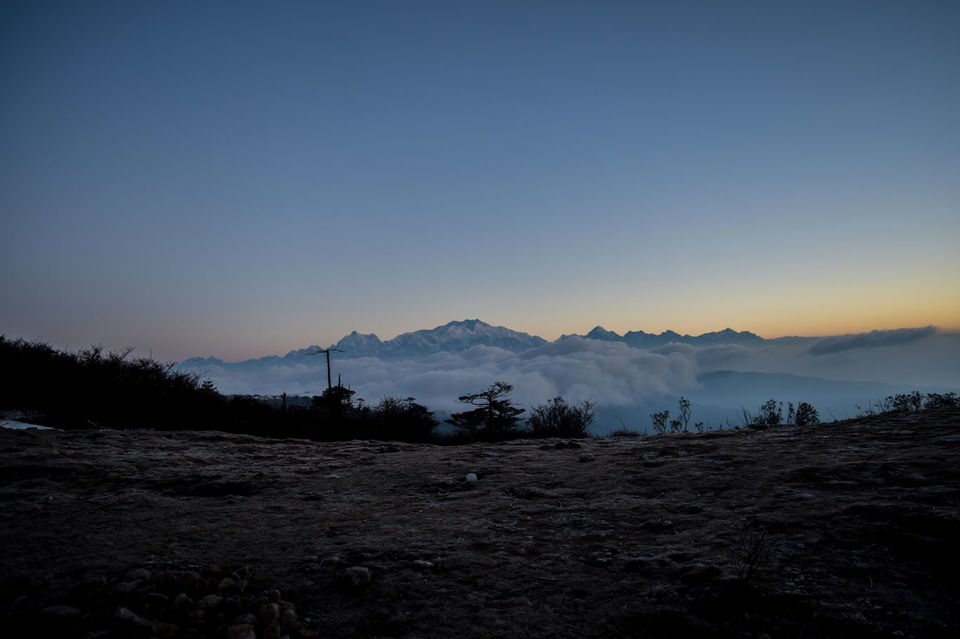
Travelers flock to Sandakphu to spot Everest, Makalu, Kanchenjunga, and Lhotse peaks, but it is the Khangchendzonga (Kanchenjunga) that dominates the landscape. Known as the Sleeping Buddha (due to its silhouette), the massif looks particularly fetching in the morning light. A challenging but rewarding trek that offers spectacular views of Everest and Kanchenjunga. It offers a good distant view of Mt.Everest (8850 m) accompanied by Lhotse (8501m) and Makalu (8475m) and a close view of Kanchenjunga (8586m).
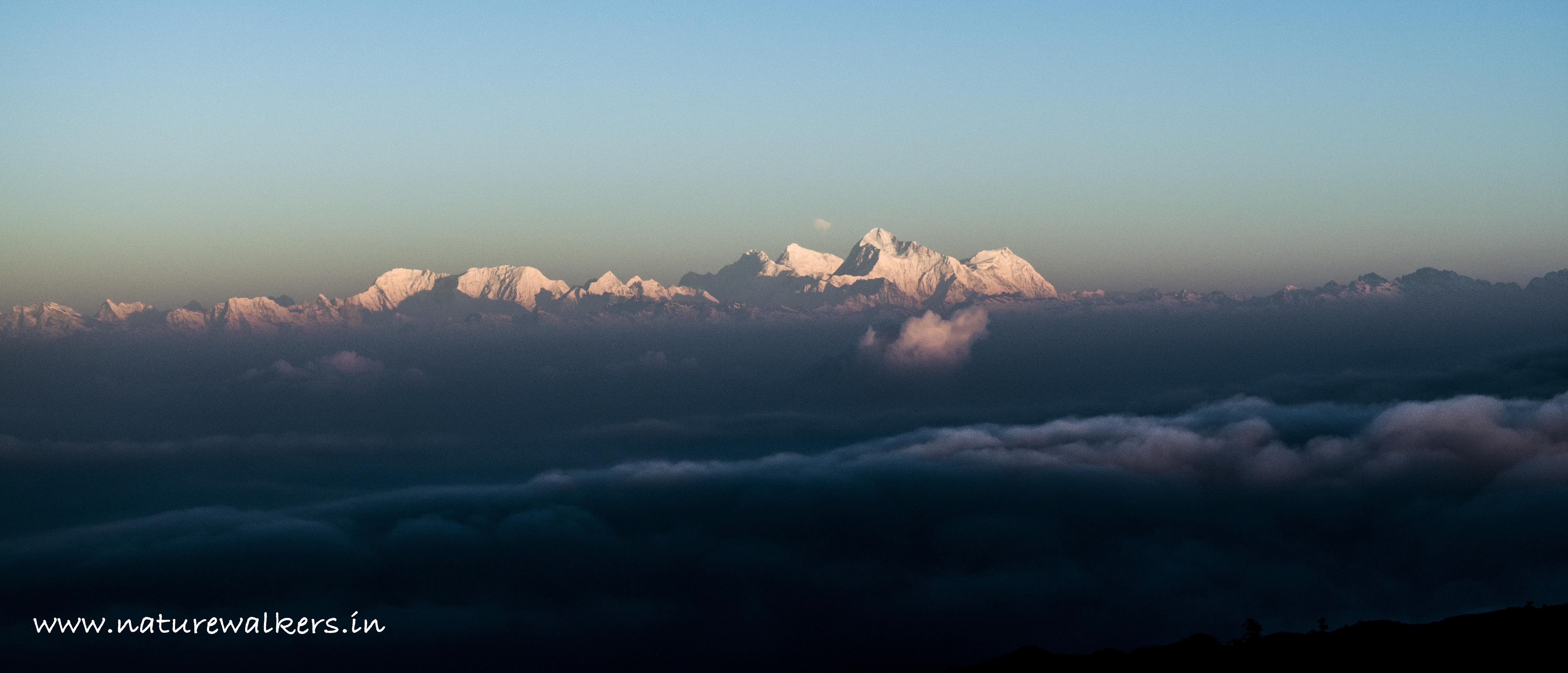
Sandakphu trek is the must-embark trail
“Sandak—who,” you might ask. And you’d be well within your rights to be bewildered. For a place that straddles two nations, it keeps a relatively low profile. Sandakphu is the highest point on the Singalila Ridge and the tallest peak in West Bengal (11,930 feet), lying on the border between Darjeeling in West Bengal and the Ilam district, Nepal. The ridge lies in Singalila National Park, where magnolias and rhododendrons make mountain views doubly special.
Sandakphu’s calling card, however, is the view, four out of the five tallest peaks in the world (Everest, Khangchendzonga, Lhotse, and Makalu) can be seen from the ridge, luring trekkers from around the country.
Interesting and enthralling, right? Want to know more and how Nature Walkers will help you plan a wonderful trek to this region.
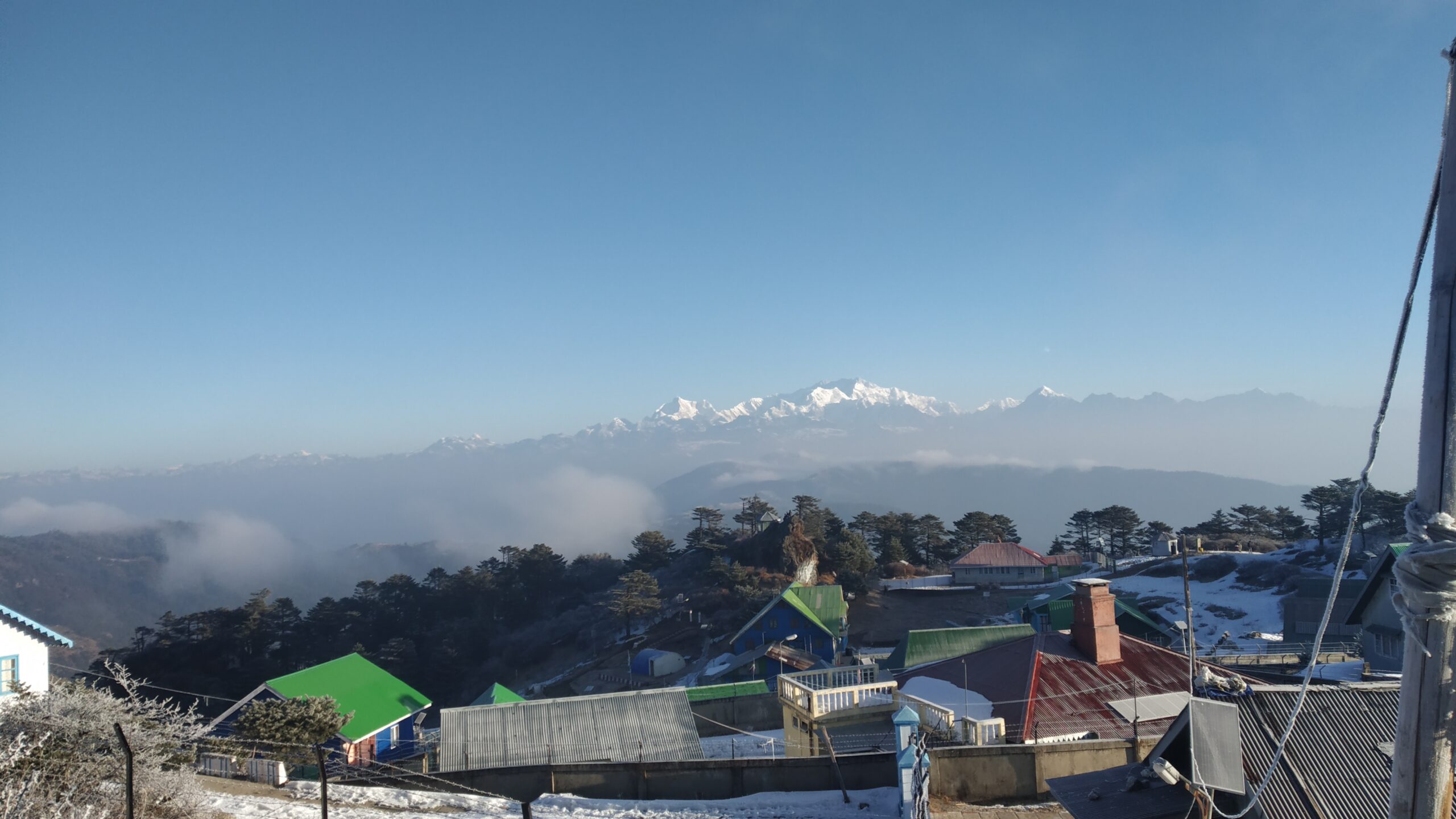
Sandakphu peak is also home to a village and few hostels. From the summit of Sandakphu, you can clearly see the unimaginable beauty of four of the world's five highest peaks, Everest, Kangchenjunga, Makalu, and Lhotse. How about gearing up your level of enthusiasm and overcoming the enormous height of Sandakphu?
It is rightly said that your trip to Darjeeling is incomplete if you have not savored the thrill of trekking to the highest peak in the state of West Bengal. Well, let me tell you that the trekking trails to Sandakphu are incredibly stimulating and full of enthusiasm. If you love trekking, then unarguably, Sandakphu should be on your bucket list. Apart from enjoying its thrilling routes passing through rich vegetation and challenging heights, you can also enjoy its beauty at the summit surrounded by the dense clouds.
Singalila National Park is another tourist attraction in the vicinity of Sandakphu. Here, you can spot several rare and endangered species of plants and animals. How about witnessing the rich wildlife in the forests of this beautiful national while on your to Sandakphu?
Best time to do Sandakphu Trek
Sandakphu is a year-round destination. However, if you are not expecting trekking trails to be covered with snow, then the best time to embark on your journey to Sandakphu is from March to June and October to November, as during this period of time, the climatic conditions are favorable and the weather is clear, letting you trek properly.
Sandakphu Trek in April
This is one of the most popular time to visit this mountain. First it's the flowering season of the region So, you can witness fifty different varieties and colors of Rhododendron Flower. During this time all the valleys of this trek feel like you are observing a live canvas filled with multiple colors surrounded by tall snow-clad mountains.
The Second reason is that the famous Red Panda wakes up from its hibernate sleep for food and to mate. The probability of finding this cute animal is very high on this trek during this season. Also lot of different species of birds migrate to this hilly section in April to lay eggs and feed their young ones.
Sandakphu Trek in October
It the post monsoon season of the trek. All the mountains and passes are covered with mushy grass, all the tall trees of the region look even more green and cold in the weather will just start to sink in. Morning views of the mountains will be even more clearer and afternoon little foggy. The combination of green and blue will be at its best and the morning sunrise will be like a cherry on top.
Another Highlight of the trek is that you could see the other tallest mountains of the World like Mt Everest, Mt Makalu and Mt Lhotse
Funny Story:
“One morning at 5.30am I was on the peak of Sandakphu and was trying to search which one is Mt Everest among these mountains. Restlessly I asked my guide. Which one is the Everest of these mountains?” He said, "wait for a second, let the sun come up and you will find out yourself". Just after he said that, I saw the magnificent mountain sparkling like a diamond.
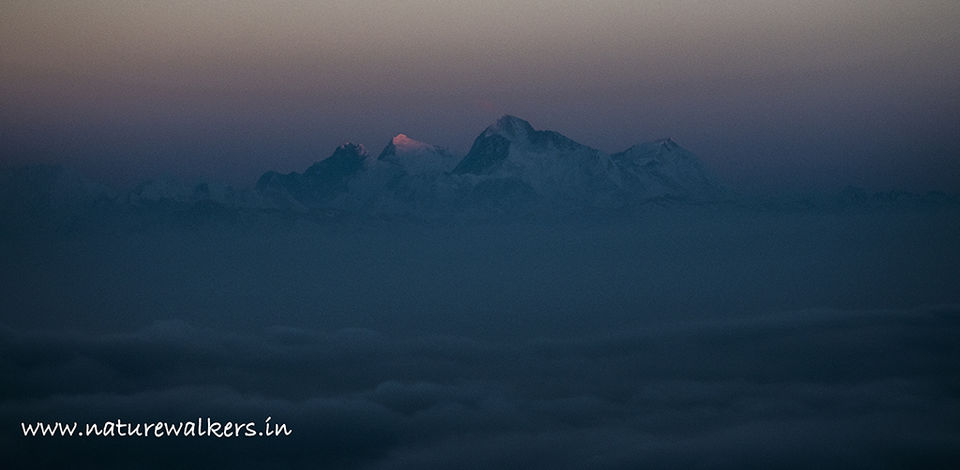
See if you can spot Mt Everest in above picture. 10 points if you can 🙂 also answer why in the comment section.
"The first ray on Mt Everest was shining like a diamond, Mt Makalu, and Mt Lhotse, guarding the precious mountain in the middle, tilt your head to the right direction, and you see the range of Mt Kanchenjunga sleeping like meditating Buddha waking up to twitting birds and rising sun and in minutes becomes a Golden Key of the Heaven."
Difficulty Level of the trek
It is said that the difficulty of any trek depends on the ability and strength of the person trekking . Although considering other treks of this region Sandakphu trek is considered to be Easy-Moderate trek. The gradient is a gradual incline. The average kilometers of the trek are about 10-11 KMs per day which is mostly covered in the morning and afternoon as the weather changes a bit foggy after later afternoon.
It is very much required to get acclimatize to the weather for which we stay a day long before the start of the trek.
Sandakphu trek does test your stamina, your endurance, your motivation, and your will power because of which we request you to do proper planning and preparation for this trek. We would also suggest you please watch our videos for the minimum fitness training required for this trek.
COVID-19 Safety & Guidelines:
Short Itinerary
Day 1:
- Getting to Manebhangjung. Pickup from NJP station is at 9 am till 3 pm one day prior to the trek date.
Day 2:
- Tumling – (2895 m or 9499 ft.) through Chitray (2400m – 7874 ft.) and Meghma (2800m or 9186 ft.), Distance – 11 km from Manebhagjung.
Day 3:
- Kalipokhri – (3185 m or 10449 ft.) Gairibas (2625 m – 8612 ft.). Distance – 11 km from Tumling.
Day 4:
- Sandakphu (3636m or 11929 ft.) Distance – 7 km from Kalipokhri
Day 5:
- Phalut (3595 m or 11794 ft.) Distance – 19 km from Sandakphu
Day 6:
- Gorkhey (2142m or 7027 ft.) Distance – 17 km (covering Phalut on the way).
Day 7:
- Sepi (1900m or 6234 ft.) t or through Manna – Distance – 15 km
Price Inclusions
- Singalila National Park Permission.
- Accommodation
- Breakfasts
- Lunch
- Dinner
- Bonfire
- Guide
- Permit
- Snack/Tea
- Lots and lots of FUN.
Price Exclusions
- Jeep Arrangement
- Arrival day accommodation and food.
- Any kind of insurance.
- Porters could be arranged and the costing is borne by the Participant
- Personal Expense:( snacks, mineral water, etc)
- Anything not included above
Stay
- Homestay/Tea House/ Tented Accommodation
- Sharing basis accommodation
- Separate accommodation for boys and girls
Meal
- We offer hot vegetarian food.
- Six breakfasts
- Six lunch
- Five dinner
- Tea/Snacks
Transportation
- We usually try to arrange a Tavera/Qualis Jeep for Pickup and Drop from/to NJP or Bagdogra Airport.
- The travel time from NJP to Manebhagjung is about 4-5 hours. The cost of transportation is Rs. 3500 per cab (5-6 people).
- Departure from Sepi to NJP. (5-6 hours travel time) The Cost of the Cab from Sepi to NJP Station is Rs 5500 (5-6 people).
- You will reach NJP Station or Bagdogra Airport approximately by 8 pm. (We request you to do the onward journey after 8 pm from NJP).
- The cost of Arrival and Departure Jeep is shared among the trekkers using the Jeep.
Pickup Points
- This are pickup location for our treks as follows:
- NJP Railway Station
- Bagdogra Airport
Pickup from NJP station will be from 9 am till 3 pm one day prior to the trek date.
- Please select the pickup location from the drop-down list while booking.
- Any change in Pick up locations/ timings would be updated via mail 24 hours before the start of the trip
- Drop-off points shall be the same as the pick-up points.
Detail Itinerary
Day 1 : Getting to the Base Camp at Manebhagjung

The closest airport is Bagdogra and NJP (New Jalpaiguri) is the closest railway station to the Base camp. The cost of the travel from NJP or Bagdogra is borne by the trekker. (A week prior communication is required for cab booking) It usually costs about Rs. 3500 per cab for 5-6 people. The Travel time is about 4-5 hours to the Base Camp of Nature Walkers.
Day 2 : Tumling
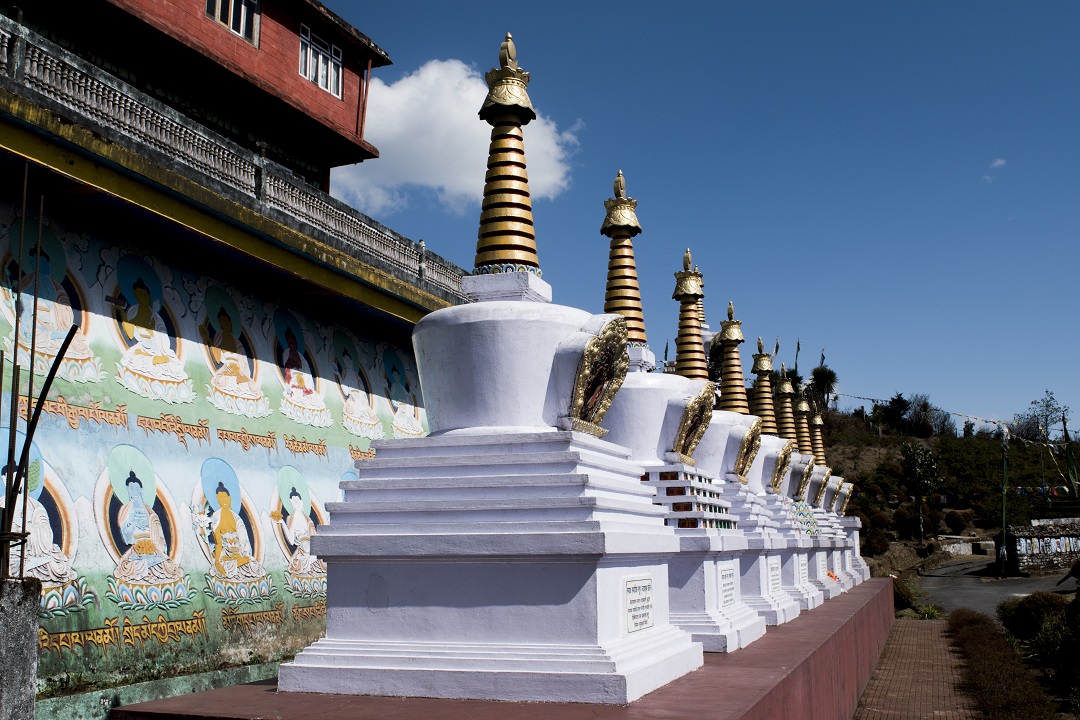
The initial track is a road till Chitrey which is about 2-3kms to the Monastery. From here the road converts into mud and rock road. The trek is categorized as easy to moderate but sometimes rain might make the trek more difficult. So, it is advised to reach the destination prior to late noon as the weather becomes a bit foggy and we can avoid a mountain shower. There are a few rocky paths (gravel roads) with muddy sections and a few walks through meadows as well.

From Chitrey to lamyadhura, the trail is little steep with zig-zag track. Although there are small concrete short cuts to cut the road but they are little steeper than the zig-zag track. This trail goes through many paper plants (local use the plant for making paper), rhododendron plants and many different species of flora by the side of the trail.

At Lamyadhura, the view opens up to the lovely meadow. This would a small halt for us. A small family lives here in there cozy tea house, living on their daily income from the passers-by. Many travelers also travel through jeeps from Manebhangjang to Sandakphu or Phalut through the motor road. It could also be used for direction if ever you feel off track.

The Next stop would be at Meghma which is about 3-4km hike from lamyadhura. It is not as steep as the previous walk of the day. Do keep your eyes by the side of the road its offers an amazing view of mountains and valleys. Before reaching Meghma, we would pass by an SSB check post (Do keep your visa/ID for verification). From here, the lunch point in Meghna is about 5 mins walk by the side of Meghma Monastery.

From here the next village is Tonglu, which is to the right from the midway diversion of Tumling Road. Although you can skip Tonglu and reach Tumling Tonglu gives a panoramic view of snow-covered peaks such as the Kanchenjungha, Pandim and the Makalu, a picturesque trekkers’ hut and solitude — Tonglu promises much and delivers for the most part.
The next village is Tumling, the day’s trek ends here. Tumling falls on the border of India and Nepal and also, gives the best view of shining Kanchenjunga (Sleeping Buddha) during morning sunrise. The most amazing view as the sun raise would sparkle on the peak of Kanchenjunga illuminating the whole surrounding with its magnificent beauty.
Day 3 : Kalapokhri

After leaving tumling, you will enter the Singalila National Park (check post to make an entry). Nature Walkers would already obtain permission for the trek so the entry would be sufficient. The next trail is through jungle hiking route which will lead you into Nepal and through it to Gairibas. Do look out for pandas here as there is a maximum chance of finding one. The next stop serves the best chai and momos here. Gairibas also has an SSB Check post (Please keep Visa/ID for verification).

Kalapokhri is about 6 km from Gairibas through Kaiyakatta, which is about 3 km of a little steep climb. The trail goes through motor road although vehicles are not allowed on this road. The next stretch is very scenes and one can find different species of birds on this. After about 2 hours of muddy road walk, you will reach near the black-water- Lake in a shape afoot, nicely decorated with a Buddhist prayer flag. Well, you have almost reached our destination of the day. Kalapokhri is actually named after this lake. In the Nepali language, Kala means black and pokhri means water, so is the name originated. The is a small Buddhist temple at the head of Lake. When you hear do look or ask for a small cave at the foothills of the hill surrounding the lake.

Kalapokhri village is on the border of India and Nepal. 10 mins walk from the lake will take you to hot chai and meal at our final point of the day. One should definitely take this opportunity to explore the morning view of this place as it gives you the best view of the valleys towards Nepal side.

Day 4 : Sandakphu

It would take an hour or two to reach sandakphu from bikeybhagjang till you reach a level road. Although it is not advised to take short cuts here but there are some short cuts that could be taken with your guide’s advice.

After taking a left after the final stone bridge will take you a little steep and muddy road, which will end up to our final destination of the day –“Sandakphu”. You could find many tea houses, small tea and snack stall around here.

Taking the muddy road by the end of the tea house would guide you to our campsite.

The campsite is exactly on the border of India and Nepal because of which you can choose to camp at either sides of the border.

The morning sunrise view of the annaporna range from the campsite is very beautiful and mesmerizing. It offers a complete 180 degree panoramic view of the world’s tallest mountains in the background. The sleeping Buddha stands tall towards your east side followed by the three sister towards its west and Makalu,Lhotse, Everest, Nuptse, chamling, chomolonzo and several other peaks towards the eastern side. The ariel distance of Mt Khanchenjanga range is said to be about 11 kms because of which the mountains would look like standing before your eyes reflecting glittering sparkles of sun raise at its peak.

Do check the Gallery for more amazing photos from this spot.

Day 5 : Phalut

You will be kept on gaining and losing altitude today for an hour till the Thukumb check-post. The total distance from sandakphu to sabargram is about 14kms in which you have the option to trek through the Nepal side as well. It is advisable to look for the junction point of the road if you ever feel lost on the trail.

After coming back to the main trail of sabargram, it would a little steep ascend till you reach our next campsite at Phalut.

Day 6 : Gorkhey

Initially the route has several ups and downs till you reach a meadow walk of about ½ km. After this, it is about 1km steep ascent. Walking on the side ridge for half an hour would take you to our rest point at Phalut. Please note, Phalut is windier because of which the you might feel this place more cold than other campsites. The viewpoints on the hillock to your left. Reaching before the late noon would give a panoramic view of the mountains and peaks of the range.

Our check post is a forest guest house at the right of the main trail. Many trekkers also choose to stay at these check post but we would be carry our journey to Gorkhey.
It’s time to descend. The next trail would be a little lengthy (about 14 km) but would be easy compared to any other routes of this trek. On course you will keep on losing altitude and the trail would take you to zig-zag forest route and then through thin bamboo jungle. These bamboos are the major source of food for red pandas because of which this route also has the maximum probability to spot a panda.

It is also the most relaxing walk of the trek the trail goes through proper muddy route surrounded by green vegetation and valleys, also you can see Pandim, Tenzingkhang, Japanu, and Narsing in the background.
Please Note: this routes has many short cuts but it’s not advisable to take short cuts as it could be made by wild animals in search of water and food. And taking them might lead to wrong direction or different village.
The final stretch of the trail is a steep descent to Gorkhey village. One must take a moment to observe the beauty of the valley once you are off the dense jungle. The view of the valley looks more like a painting – as the village has beautiful water streams, farmlands, small houses, long pine cone trees, small bridge to cross the stream. The Left side of the steam is Sikkim and right is West Bengal.

The best thing to do in Gorkhey is to explore the village, the water steam and peas and potato farms.
Day 7 : Sepi

After tea and snack, we would continue our descend through nicely decorated homestay and pea gardens until we reach the Srikhola bridge. Crossing the bridge guides you to an ascent until we reach our destination – Sepi. We are expected to reach Sepi before noon for our hot lunch.
After lunch, you can depart to NJP/Darjeeling. Nature Walker would be arranging the vehicles on demand. It usually takes about Rs. 5.5K for – 5-6 people per cab to NJP which is bared by the trekker. The expected time to reach NJP is at 8 pm so, we request you to do your onward booking after 8 pm.
Sandakphu trek teaches us to be strong, patient and it definitely ignites a spark to explore this world with an objective.
One might say – This trek leaves you speechless but then turns you into a storyteller.
Things to Carry
- Xerox Copy of you Aadhar/Voter ID (Mandatory requirement for forest permit)
- Water Bottle – 2 (1 liter each)
- Raincoat – if in case it rains.
- Torch with New Batteries
- Shoes with good traction on it.
- One cover sheet – Good to have one
- A cap
- Cargo/track pants -2
- T-shirt -2
- Extra pair of Socks
- Personal medication kit
- Soap
- Toothpaste
- Toothbrush
- Sunscreen
- Rain Coat/Poncho
- Flip-flops
- Portable chargers
- One bag to keep wet cloths
- Little extra cash for meal not included in the itinerary
Refund & Cancellation
- Please check out the cancellation policy:
- https://naturewalkers.in/cancellation-policy/
- you can send your cancellation request to connect@naturewalkers.in
Safety,Risk and Advisory
FAQs


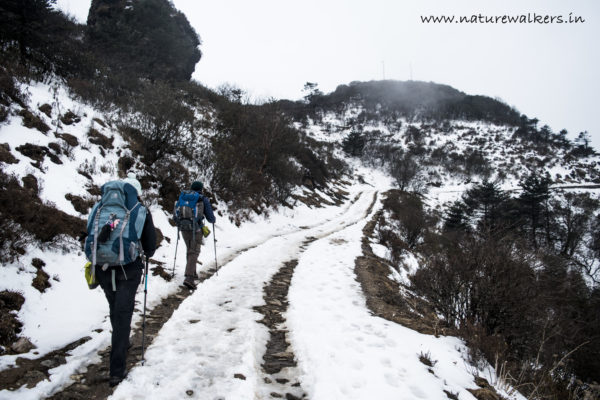
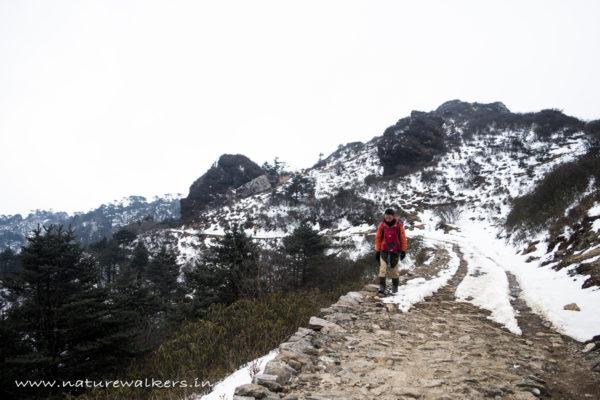
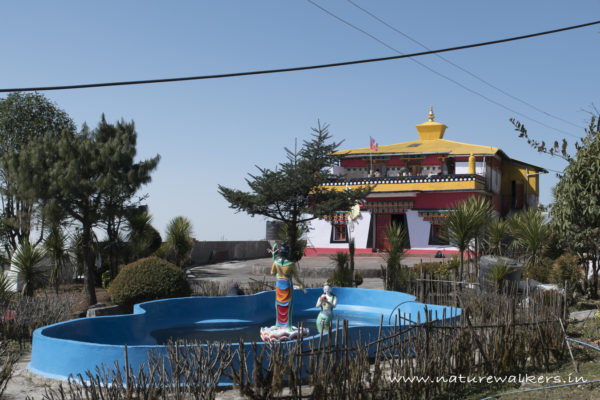
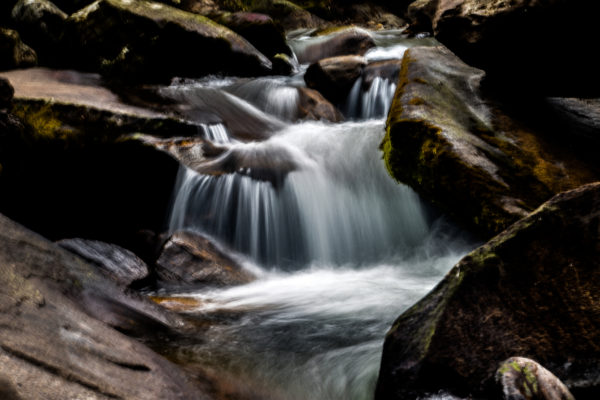

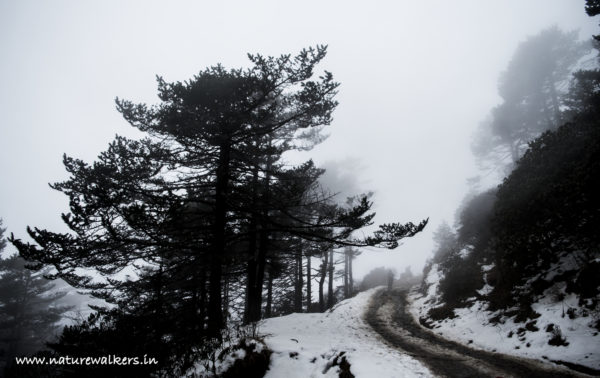

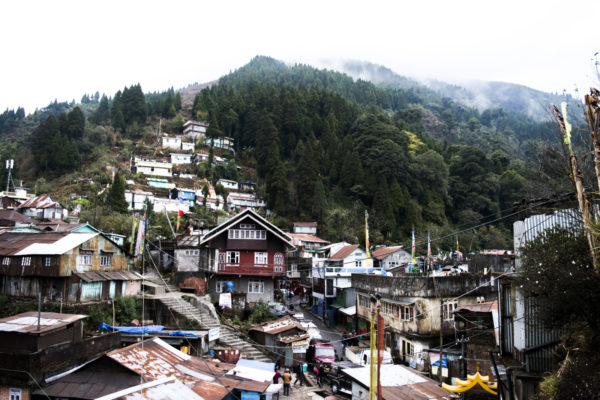

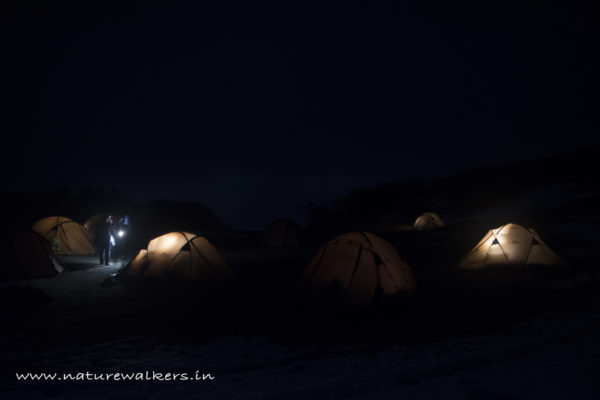
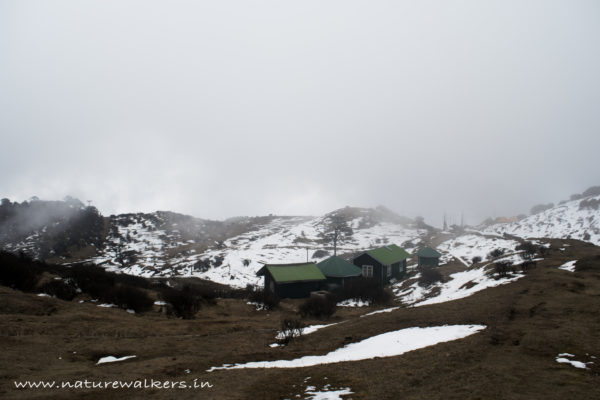
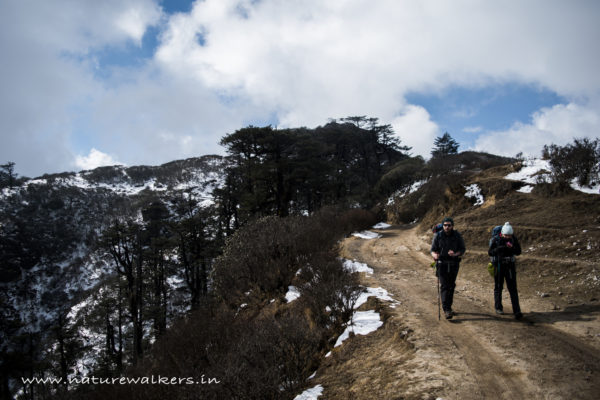

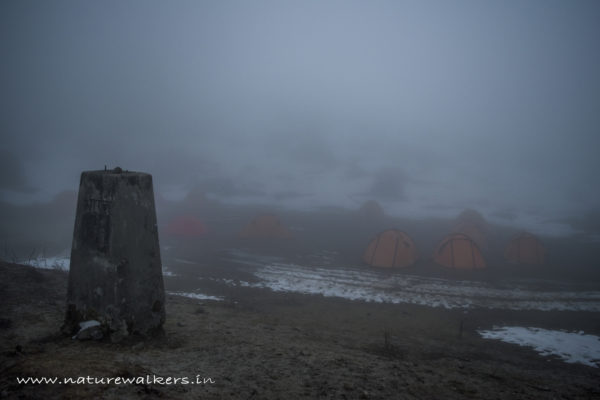
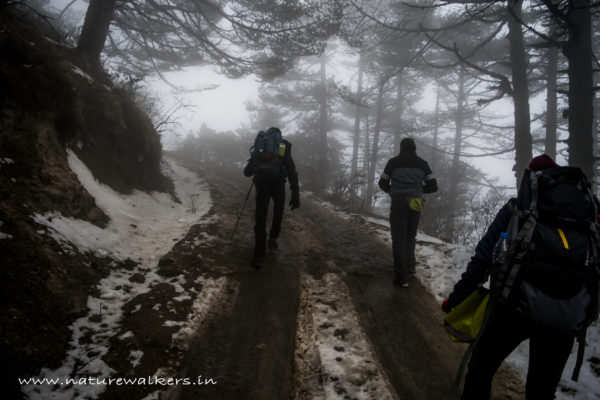
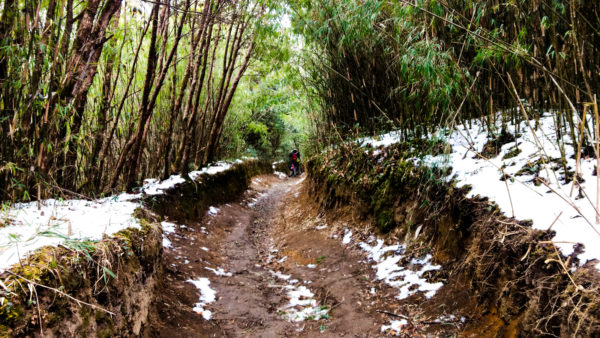
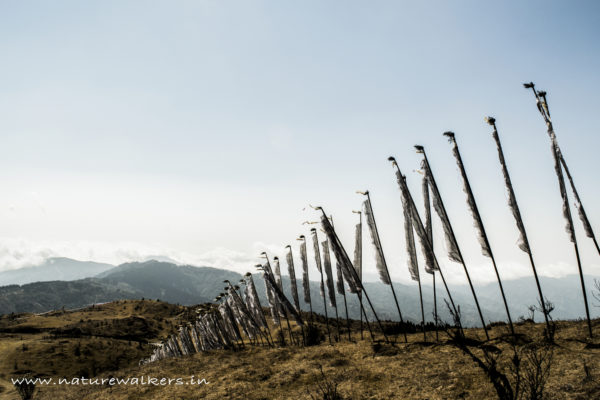

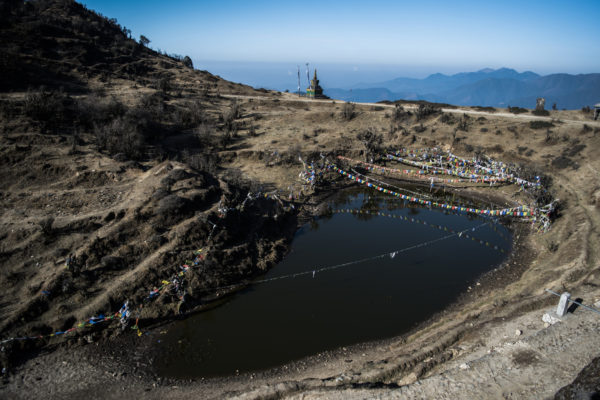
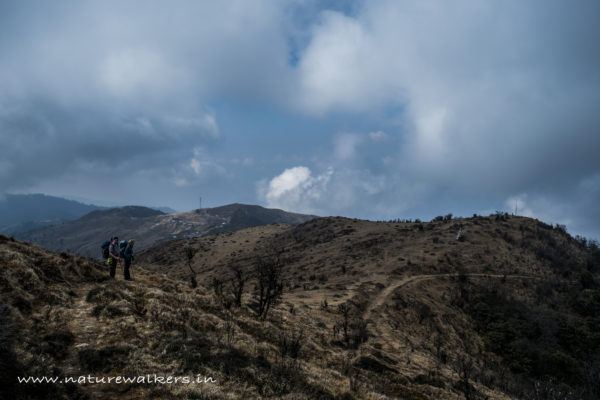
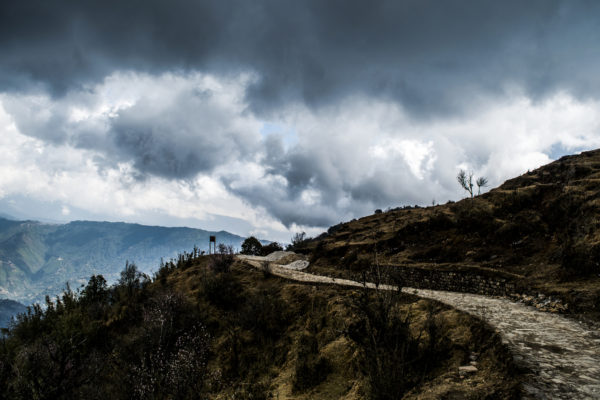
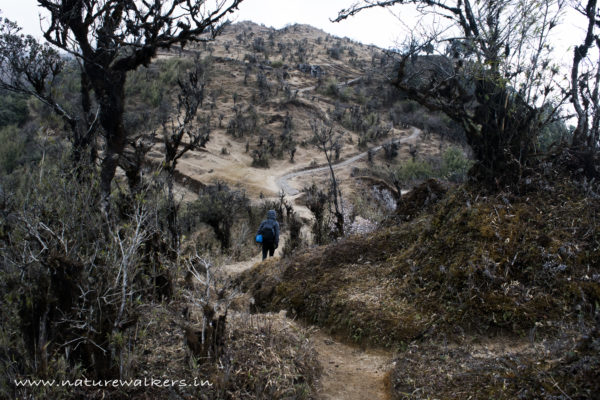
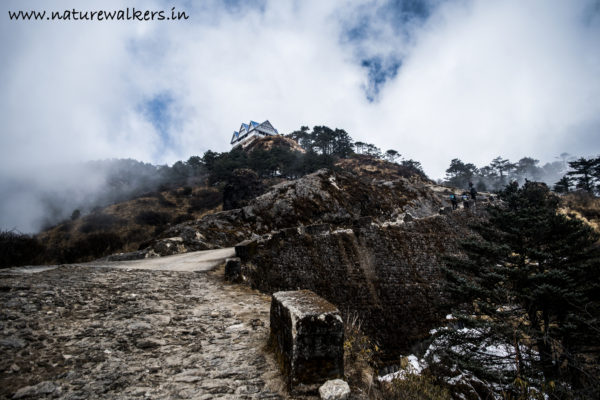

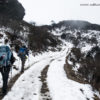
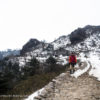
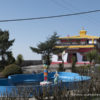
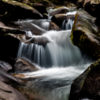
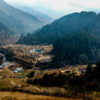
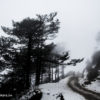

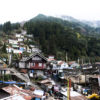
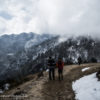
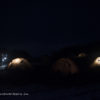
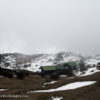

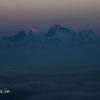
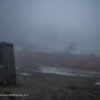
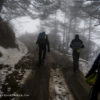
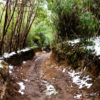
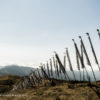
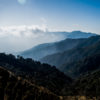
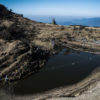
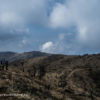
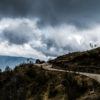

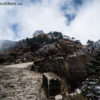
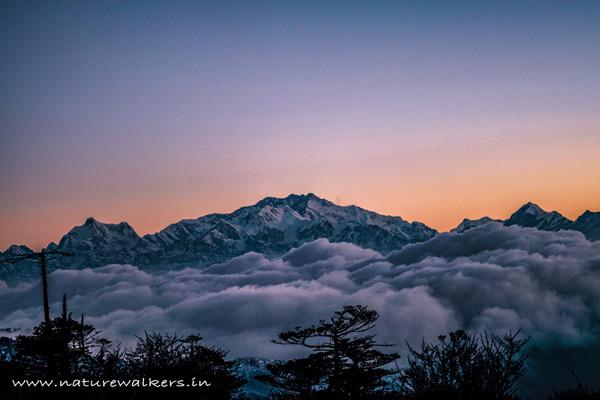


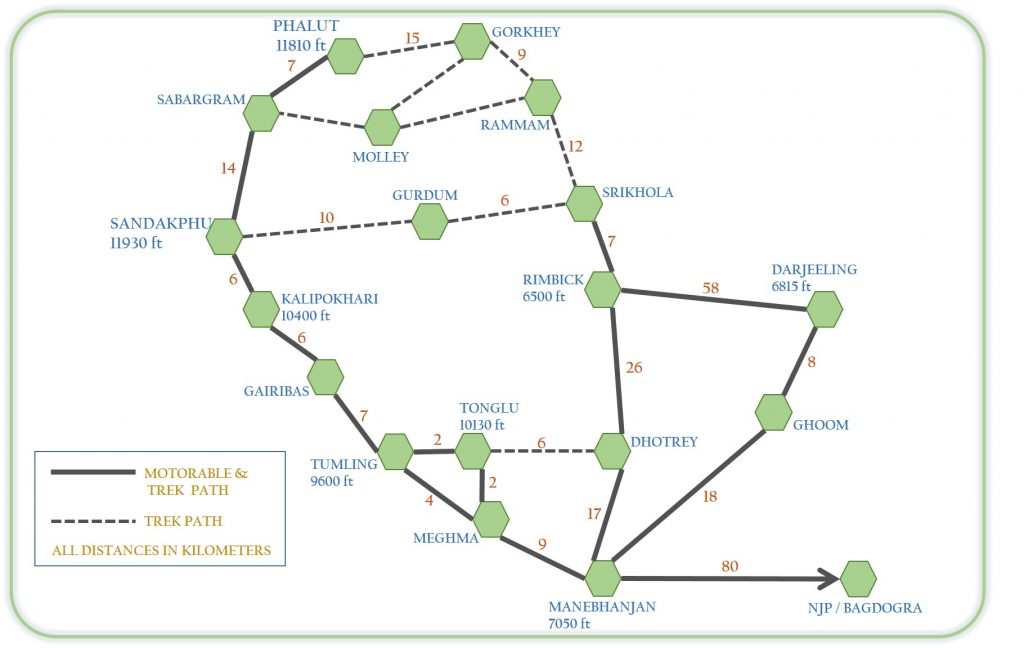
Smile –
Great Trip !!
Nature Walkers –
Thank you Smile, Yes it is wonderful trip to explore the Sandakphu Phalut Trek